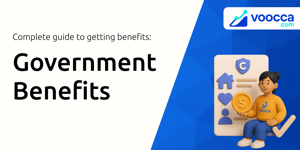
As banking fees quietly climb, consumers are bearing the cost of monthly charges and hidden service fees that can add up over time. With the average monthly maintenance fee now at $13.95 at top U.S. banks, account holders face an overlooked expense that totals $167.40 annually.
By understanding fee structures, comparing options, and executing a strategic switch, you can reclaim hundreds of dollars each year. This article explores strategies to eliminate unnecessary monthly costs, navigate waiver requirements, and choose the account that aligns with your financial habits.
The surge in online banking has driven fee pressure from digital competitors onto traditional institutions. Many established banks have begun to reduce or eliminate fees to stay competitive, but the pace varies. Consequently, free checking accounts are increasingly common, yet consumers must proactively seek them out.
Over the past five years, monthly maintenance fees have increased by 5%, rising from $13.29 to $13.95. Fees range from $0 to $20 per month, with over 37% of checking accounts charging no maintenance fee at all.
Free checking percentages have climbed from 35.7% to over 37% in just six months, demonstrating a swift market response. This trend signifies that banks are responding to consumer demands for lower costs. However, legacy banks still hold the majority of account share, meaning many customers remain unaware of the evolving marketplace.
Although recent surveys show a slight 3.1% dip in average fees, inflation has kept costs on an upward trajectory. With traditional banks under pressure from nimble digital competitors, fee structures are evolving—but not always fast enough for everyday consumers.
Banks typically offer fee waivers when you meet certain criteria, which may include maintaining minimum balances or setting up direct deposits. The average minimum balance requirement among the top ten U.S. banks is $1,010, though figures vary widely. Some institutions also provide incentives for going paperless.
Understanding these requirements can help you decide whether meeting the waiver thresholds is worth the effort—especially when many online banks require no minimum balances and simple sign-up processes.
Beyond maintenance fees, several other charges can impact your bottom line. Recognizing these fees is the first step toward reducing them.
Online banks and credit unions are leading the charge in offering zero monthly maintenance fee accounts, accompanied by perks like ATM reimbursements and cashback offers. Popular no-fee options include Capital One 360, Charles Schwab, Discover, and EverBank.
For example, a typical Chase account charging $12 per month translates to $144 annually. By switching to a $0-fee account, you not only save that amount but may also benefit from reduced overdraft and ATM fees, potentially adding another $50 to $100 in savings each year.
Additionally, some institutions provide attractive APYs—sometimes up to 5%—on checking balances, turning routine cash holdings into a productive asset.
Before making the move, ensure your new account meets all your financial needs and mitigates transitional risks.
Switching to an online or smaller institution may mean loss of branch access and in-person service. If you rely on cash deposits or specialized services, verify local branch availability or use partner networks. ATM limitations can be a challenge, but many banks reimburse fees or partner with expansive networks.
Carefully reading the fine print is essential—some online banks limit cash deposits or impose fees beyond ATM transactions. Setting up account alerts can help you avoid accidental overdrafts or inactivity charges, ensuring that the new account behaves as promised.
Another concern is reliability; newer fintechs might raise questions about stability. Always ensure accounts are insured by the FDIC or NCUA and read customer reviews to gauge service quality. In most cases, the benefits of cost savings and superior digital tools far outweigh these trade-offs.
Beyond fee elimination, modern checking accounts offer features designed to grow your savings. Several fintechs provide round-up tools that transfer spare change into a savings pot, while others pay interest on checking balances. competitive interest on checking balances can boost your financial health without additional effort.
Financial advisors often highlight the value of aligning your banking products with personal goals. Whether you aim to grow an emergency fund or earn interest on daily cash flow, selecting an account that pays an APY can amplify your returns. Additionally, consider bundling checking with high-yield savings or money market accounts to streamline your financial ecosystem.
In an era of rising banking fees, switching accounts emerges as a simple yet powerful strategy to boost your savings. By analyzing fee structures, leveraging waiver requirements, and selecting fee-free options, you can unlock potential annual savings of $167.40 or more.
Remember, the process can be completed in as little as one afternoon. With careful planning and minimal disruption, you can transition to a fee-free account and immediately begin enjoying enhanced banking benefits. Take control of your finances today: investigate your options, select the account that aligns with your lifestyle, and watch your savings grow free of unnecessary fees.
References













